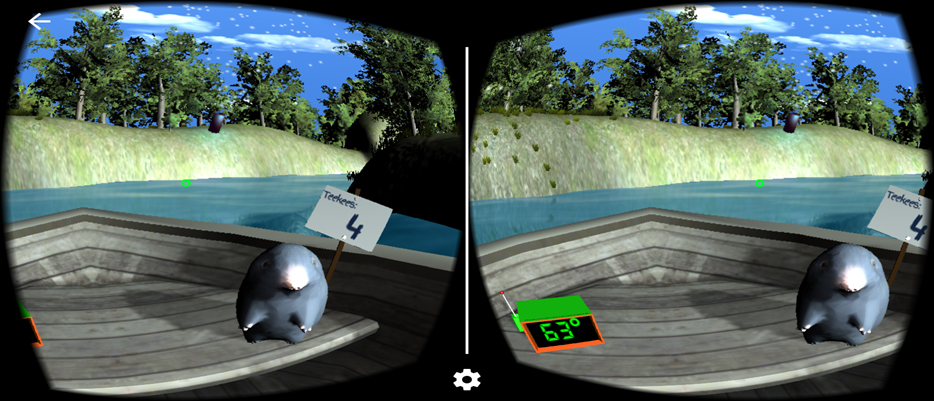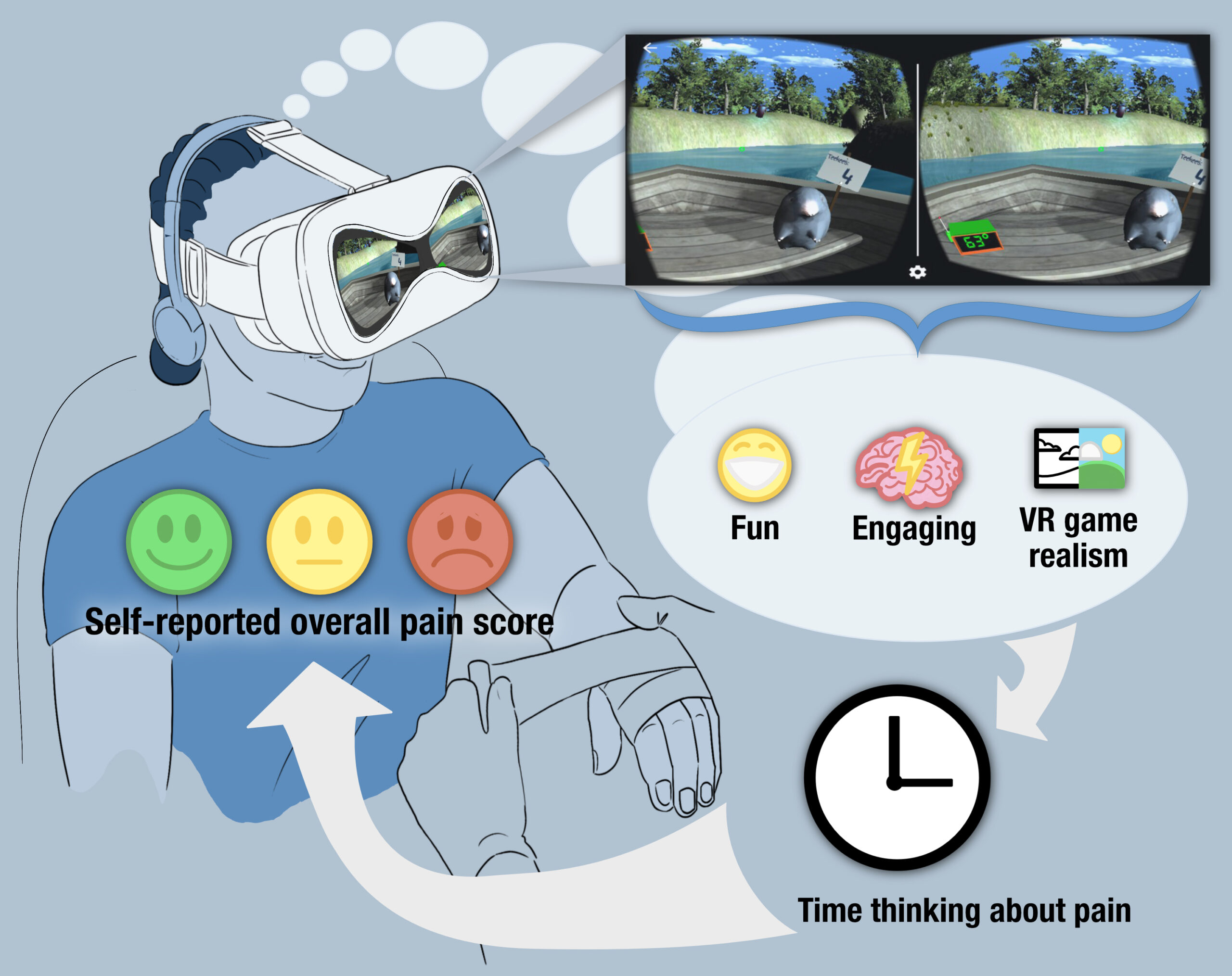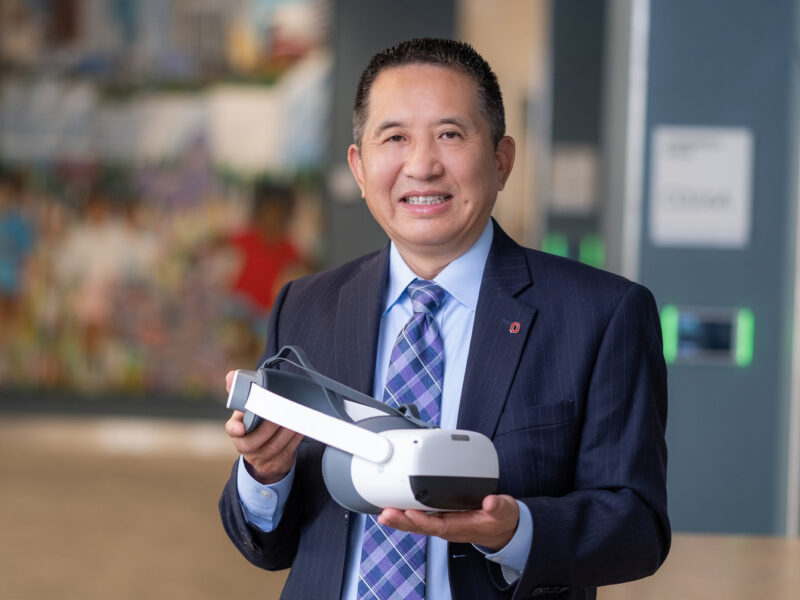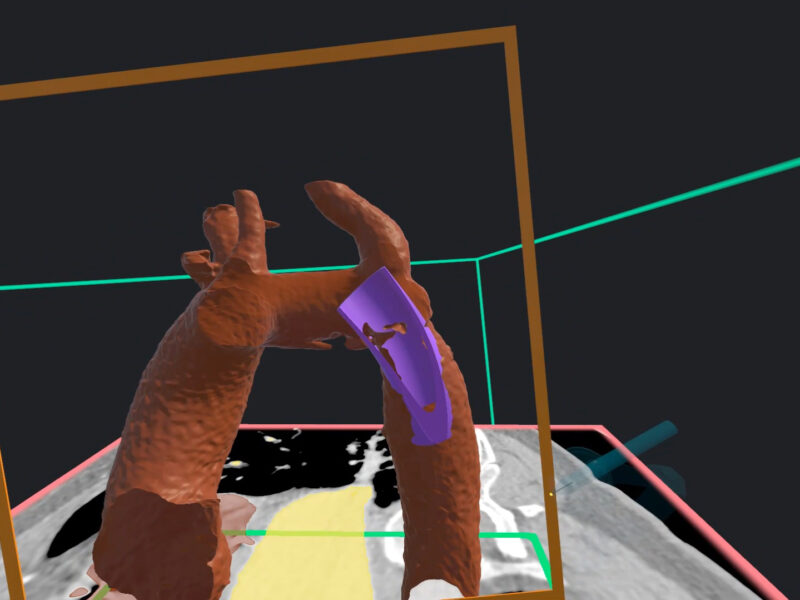What Features Make Virtual Reality Effective in Pain Management?
What Features Make Virtual Reality Effective in Pain Management? https://pediatricsnationwide.org/wp-content/uploads/2024/04/Software2-002.jpg 934 401 Mary Bates, PhD Mary Bates, PhD https://secure.gravatar.com/avatar/c6233ca2b7754ab7c4c820e14eb518c8?s=96&d=mm&r=g
Game realism, fun and engagement all impact pain perception during burn dressing changes.
Researchers from Nationwide Children’s Hospital show that three key features of a virtual reality intervention (game realism, fun and engagement) influence self-reported pain scores during burn dressing changes. The findings provide insight into the potential mechanisms through which virtual reality affects pain perception.
In recent years, virtual reality (VR) has emerged as a promising noninvasive and nonpharmacologic alternative for pain management. However, little is known about which VR features impact pain reduction and the mechanisms through which they work.
“Our team is the first to use randomized clinical trial data to rigorously test the key features of these VR games,” says Henry Xiang, MD, MPH, PhD, MBA, founding director of the Center for Pediatric Trauma Research at Nationwide Children’s and senior author of the study.
Dr. Xiang and colleagues evaluated a VR game titled Virtual River Cruise. It was developed for pain alleviation during burn dressing changes by Nationwide Children’s Research Information Solutions and Innovation Department, with input from game developers, researchers, clinicians and patients. The VR game is played on a smartphone loaded into a lightweight, low-cost VR viewer. The player experiences a first-person perspective floating down a gentle river on a boat beside an otter. By tilting his or her head, the player aims at crystals that appear along the path, which then emit snow and disappear. As the player activates more crystals, snow builds up in the boat, a thermometer shows the temperature decreasing, and a scoreboard displays the number of crystals opened.
“The reason for the snowy environment is that this game is played during burn procedures,” says study coauthor Megan Armstrong, MPH, the clinical research coordinator team lead at the Center for Pediatric Trauma Research at Nationwide Children’s. “We wanted to keep these patients’ minds on something cooling.”
In a previous paper, the team reported the results of a randomized, controlled trial of the VR game in pediatric burn patients undergoing dressing changes. Patients were assigned to one of three groups: standard-of-care, active VR (in which they played Virtual River Cruise) or passive VR (in which they were immersed in the same VR environment but did not interact with the game). After receiving the intervention, children completed surveys measuring their perceived pain and VR experience. The results showed that active VR was more effective at lowering overall pain than standard care, and that active VR led to lower scores for worst pain compared with passive VR.
“In that paper, we not only established the effectiveness of this VR game, but also confirmed its safety and provided evidence for its clinical feasibility,” says Dr. Xiang, who is also a professor at The Ohio State University College of Medicine.
For the new study, the research team turned to the surveys of patients’ VR experience. Post-intervention, they had asked children to rate three key features of the VR game: the degree of realism experienced in the VR environment, the degree of fun associated with playing the VR game and the perceived engagement level with VR distraction during the procedure.
Analyzing these data revealed that realism, fun and engagement each indirectly influenced pain perception during burn dressing changes. In addition, engagement had a significant direct effect on self-reported pain score — suggesting a partial explanation for how active VR reduces pain more effectively than passive VR.
Dr. Xiang, Armstrong and colleagues propose a model of these key VR features, assessed through path analysis, that provides insight into the potential mechanisms through which they influence pain perception. The model supports distraction as one key mechanism of VR analgesia; each VR feature was negatively associated with time spent thinking about pain, which positively influenced self-reported pain.

The researchers’ model also highlights an additional pathway by which VR reduces perceived pain directly and independently from distraction. VR feature engagement directly reduces self-reported pain, potentially representing a neurophysiological mechanism beyond mere distraction.
“This paper not only shows the key features to consider when developing a VR intervention for pain management,” says Armstrong. “We provide evidence that VR goes beyond merely distracting kids to provide them with pain reduction.”
Dr. Xiang says this study adds to the evidence that their VR game is effective at reducing pain during dressing changes in a pediatric burn unit, but the applications do not end there. He also points to a recent pilot study from their team, which suggests the intervention can be used by families for burn dressing changes at home. And even more broadly, the researchers hope that use of their VR game could expand to other pediatric medical procedures where acute pain management is needed.
“Medical VR is a growing field and we believe the potential is huge.” says Dr. Xiang.
Reference:
- Jain S, Armstrong M, Luna J, Thakkar RK, Fabia R, Groner JI, et al. (2024) Features of virtual reality impact effectiveness of VR pain alleviation therapeutics in pediatric burn patients: A randomized clinical trial. PLOS Digit Health. 3(1): e0000440. Doi: 10.1371/journal.pdig.0000440.
- Xiang H, Shen J, Wheeler KK, Patterson J, Lever K, Armstrong M, Shi J, Thakkar RK, Groner JI, Noffsinger D, Giles SA, Fabia RB. Efficacy of Smartphone Active and Passive Virtual Reality Distraction vs Standard Care on Burn Pain Among Pediatric Patients: A Randomized Clinical Trial. JAMA Network Open. 2021;4(6):e2112082. PMID: 34152420.
Image credits: Nationwide Children’s
About the author
Mary a freelance science writer and blogger based in Boston. Her favorite topics include biology, psychology, neuroscience, ecology, and animal behavior. She has a BA in Biology-Psychology with a minor in English from Skidmore College in Saratoga Springs, NY, and a PhD from Brown University, where she researched bat echolocation and bullfrog chorusing.
- Mary Bates, PhDhttps://pediatricsnationwide.org/author/mary-bates-phd/December 27, 2016
- Mary Bates, PhDhttps://pediatricsnationwide.org/author/mary-bates-phd/
- Mary Bates, PhDhttps://pediatricsnationwide.org/author/mary-bates-phd/
- Mary Bates, PhDhttps://pediatricsnationwide.org/author/mary-bates-phd/
- Post Tags:
- Burn
- Trauma
- Virtual Reality








